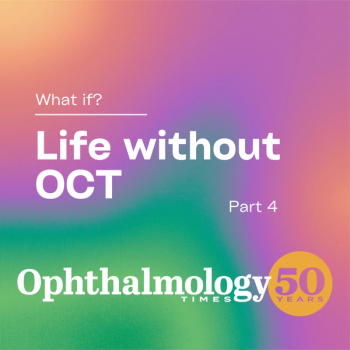
EnVision Summit 2023: Baseline dry eye status may dictate choice between LASIK and PRK
Key Takeaways
- Patient baseline characteristics, including Schirmer’s score and corneal staining, guide the choice between LASIK and PRK.
- LASIK involves cutting a corneal flap, affecting nerve regeneration, while PRK does not.
In a presentation at the EnVision Summit 2023 in Puerto Rico, Sumayya Ahmad, MD, pointed out that for patients with lower Schirmer’s scores and corneal staining, PRK may be a good choice. If the dry eye can be treated preoperatively and the eye has no staining, surgeons can consider LASIK.
The baseline characteristics of individual patients, ie, the Schirmer’s score and corneal staining, may help surgeons make the choice between LASIK and PRK, according to Sumayya Ahmad, MD, an assistant professor of ophthalmology at the Icahn School of Medicine of Mount Sinai, New York. She presented her pearls at the Envision Summit Ophthalmology at the El Conquistador Resort in Puerto Rico.
LASIK, the most commonly performed refractive procedure in the country, requires cutting a flap in the anterior part of a cornea, either with a knife or a laser. The flap depth ranges from 110 µto 160 µ, she explained.
However, during the ablation process, the deeper corneal nerves (stromal nerves) are severed and the more superficial nerves are transected, which deinnervates the entire incision. In fact, only the nerves in a small part of the cornea, the hinge, are preserved.
Studies have also shown that ocular surface markers are affected by both of these procedures. A large meta-analysis1 found that when LASIK and PRK were compared, LASIK resulted in a significant decrease in the tear film break-up time and PRK a non-significant tear film break-up time. LASIK also results in a significant decrease in tear production, whereas PRK did not.
Another study2 reported a comparison of LASIK and PRK results in 34 patients with mild myopia that showed that both procedures caused foreign body sensation during the first 3 months that resolved by 1 year. A 3rd study3 found that preoperative characteristics may result in chronic dry eye after LASIK.
The bottom line is that both refractive procedures damage the corneal nerves and the eyes differ in the ability to regenerate the nerves over time.
In LASIK, the entire sub-basal plexus (except for the hinge) is ablated and the deep stromal nerves are also destroyed. The nerves do regenerate, with 58% having done so by 2 years postoperatively and 79% by 5 years.4
All of the regeneration process starts at the hinge but no other part of the cornea. A study that evaluated eyes 15 and 20 years after LASIK found that in mild to moderate myopia no significant difference was seen in the corneal nerve fiber density, branch density, or fiber length compared with controls.
In PRK, 50% of nerves regenerate 6 months postoperatively and 92% at 2 years.
Possible course of action
Ahmad concluded that for patients with lower Schirmer’s scores and corneal staining, PRK may be a good choice. If the dry eye can be treated preoperatively and the eye has no staining, surgeons can consider LASIK. Importantly, the long-term effects on dry eye and corneal nerve regeneration are still being clarified.
References
Sambhi R-DS, Sambhi GDS, Mather M, Mehta MSM. Dry eye after refractive surgery: a meta-analysis. Can J Ophthalmol. 2020;55::99-106; doi: 10.1016/j.jcjo.2019.07.005.
Murakami Y, Manche EE. Prospective, randomized comparison of self-reported postoperative dry eye and visual fluctuation in LASIK and photorefractive keratectomy. Ophthalmology. 2012;119:2220-2224; doi: 10.1016/j.ophtha.2012.06.013. Epub 2012 Aug 11.
Konomi K, Chen L-L, Turko RS, et al. Preoperative characteristics and a potential mechanism of chronic dry eye after LASIK. Invest Ophthalmol Vis Sci. 2008;49:168-174; doi: 10.1167/iovs.07-0337.
Moon SW, Yeom D-J, Chung S-Y.
Neurotrophic corneal ulcer development following cataract surgery with a limbal relaxing incision . Korean J Ophthalmol. 2011;25:210-213.
Newsletter
Don’t miss out—get Ophthalmology Times updates on the latest clinical advancements and expert interviews, straight to your inbox.



















































.png)


